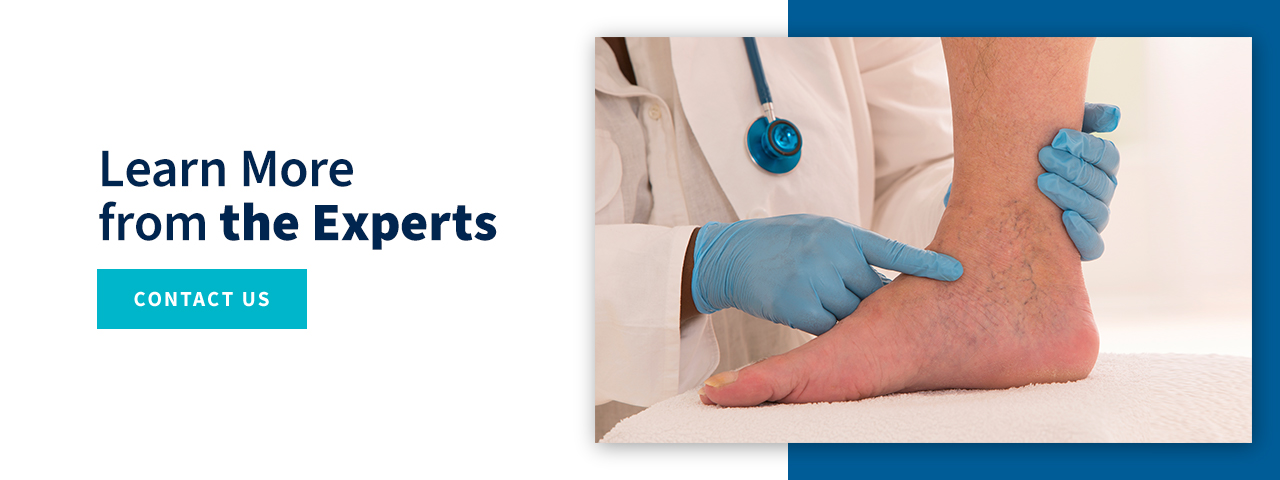
A leg ulcer is a break in the skin on the leg that eliminates the protective barrier provided by the skin, allowing air and bacteria to enter the wound and underlying tissues. Leg ulcers are present for more than 2 weeks and are more than minor trauma. Leg ulcers have many causes but venous insufficiency is the most common.
For most people, a minor injury will heal without difficulty within a week or two. However, if the skin does not heal or the sore grows bigger, the wound becomes a chronic leg ulcer and signifies a more serious medical issue, such as venous disease.
Venous leg ulcers or VLU’s are caused when the veins in your leg are weak and ineffective. This allows blood to pool in your legs leading to increased pressure in the veins. This pressure gets transmitted to the skin and decreases the blood supply necessary to nourish the skin and the skin layers die and breakdown.
The veins in your legs carry blood from the feet toward your heart through one-way valves. If these valves experience damage or scarring, the blood can flow down the legs and place high pressure on the veins.
Over time, this high pressure may cause the tiny blood vessels to burst and cause blood to enter and damage the tissues surrounding the veins. This damaged tissue is easier to break and may form a chronic ulcer after a minor injury.
Another common cause of chronic leg ulcers is arterial disease. The arteries carry oxygenated blood to tissues in the body. If an artery becomes narrow or damaged, it can cause a restriction in the blood supply. A decreased blood supply means the overlying skin and tissues start to lack oxygen and fail to heal when an injury occurs.
A chronic leg ulcer can also result from other underlying conditions, such as:
Factors such as the cause of your chronic leg ulcer and any underlying conditions may impact the symptoms you experience.
While ulcers can be painful, preexisting conditions such as diabetes can cause an ulcer to be present without pain. A lack of pain is why many patients fail to seek medical treatment, resulting in their leg ulcers becoming larger and their underlying illnesses progressing.
If you are experiencing the following symptoms, please make an appointment at Central Florida Vein and Vascular Center:
Preventing leg ulcers begins with avoiding vein issues. Some health habits you can form to improve circulation and lower your risk for ulcers include:

If you’re looking to improve your vein and vascular health, the first step is to receive a thorough diagnosis from our vein specialists at Central Florida Vein and Vascular Center. Our expert team will develop a customized treatment plan with numerous options to best suit your medical needs. Please complete our contact form today to schedule your diagnostic vascular ultrasound at our offices in Ocoee, Kissimmee, The Villages or Oviedo.